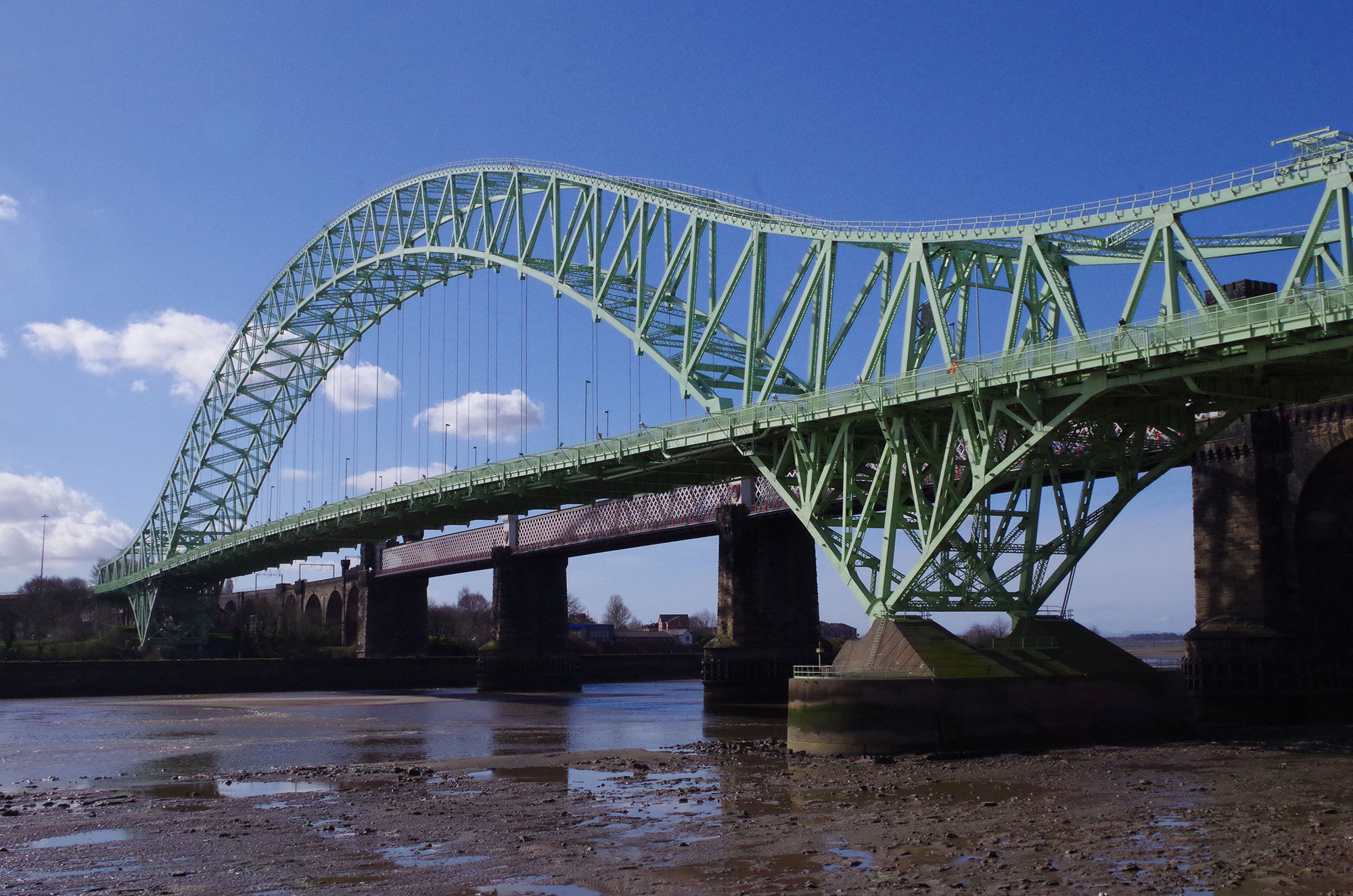Runcorn To Widnes Bridge Refurbishment
The newly refurbished Runcorn to Widnes Road Bridge (also known as The Silver Jubilee Bridge) was originally designed by Mott, Hay and Anderson with steelwork by Dorman-Long (Bridge and Engineering). Work began in 1956 and it opened in 1961. The road bridge was later widened to take extra traffic. The bridge spans both the River Mersey and the Manchester Ship Canal and replaced a transporter bridge completed in 1905, whose abutments still survive. The road bridge is a foil to the wrought iron lattice girder railway bridge of the London and North Western Railway designed by William Baker and built between 1863 and 1868.
The bridge’s original design had to allow the passage of shipping along the Manchester Ship Canal. Many ideas were considered, including a new transporter bridge or a swing bridge but these were considered to be impractical and it was decided that the best solution was a high-level bridge upstream from the railway bridge. The main arch is 361 yards (330 m) long and each side arch measures 83 yards (76 m). During its construction 720,000 rivets were used. Its height over the river bed is 285 feet (87 m) and the headroom over the ship canal is 80 feet (24 m). During its initial construction 5,900 tons of steel were used and 7,500 tons of concrete.
In recent decades traffic on the bridge continued to grow to over 80,000 vehicles a day, and there was frequent congestion. In order to alleviate this, a further crossing was built, known as the Mersey Gateway. This is a six-lane toll bridge to the east of the Runcorn to Widnes Road Bridge which opened on 14 October 2017. Following the opening of the Mersey Gateway, the Runcorn to Widnes Road Bridge was immediately closed for maintenance and refurbishment. It has recently reopened to pedestrians and cyclist, with plans for it to reopen fully for vehicle use around summer/autumn 2020.
For more information on the bridge, its construction and history please visit its Wikipedia page here.
(photo by Jonathan Aylen)


Could it have been the last major bridge to be pinned together with rivets?????
If so, rather pathetic, despite its looks
Nowt the matter with rivets. If one falls out of Queen Ethelfleda’s Bridge, there’s 719,999 left to hold bridge up.
There were plenty of riveters around Liverpool, and especially Birkenhead, at the time.
Some folk still use rivets.
The Ffestiniog Railway came by a perfectly good rivetted boiler from Australia (at scrap metal price !), because nobody in Australia could certify a rivetted boiler and they had to build a new welded one. Eee, how wasteful.
There’s them about who wouldn’t even know who Queen Ethelfleda was. She was a grand girl.